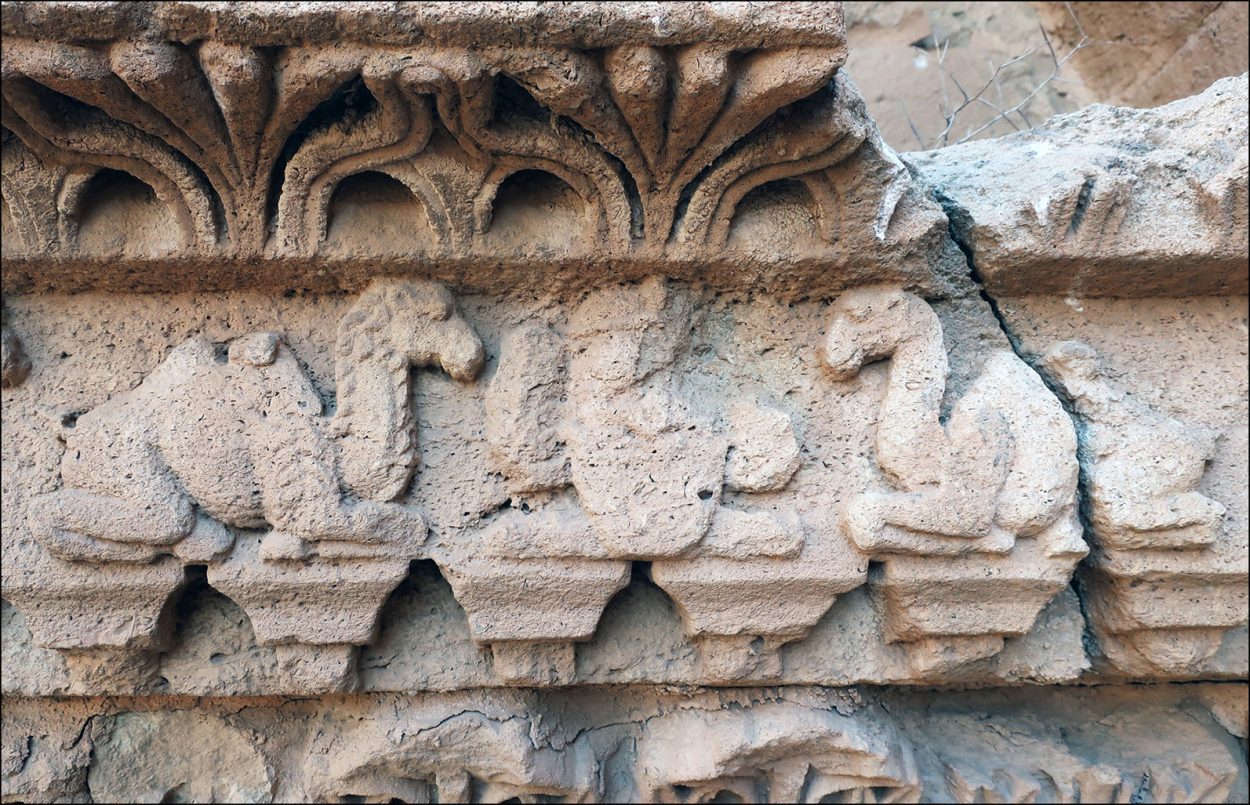Archaeologists restoring an ancient temple in Iraq that was damaged by Daesh have identified evidence of early hybrids of dromedary and Bactrian camels in its artwork.
The discovery was made at the Temple of Allat in the city Hatra, located around 70 km from Mosul. The impressive ancient city was once the capital of the Kingdom of Hatra but suffered extensive damage at the hands of the so-called Islamic State, ISIS) from 2015-2017.
Since then the Aliph-ISMEO research projects have been working to restore the city. In the process, work led by Professor Massimo Vidale, from the Università degli Studi di Padova in Italy, identified hybrid camels in a frieze in the Temple of Allat on a lintel above a door.
Previous studies had identified eight dromedaries and two Bactrian camels in the frieze. However, the team’s research, published in the journal Antiquity , identified that the face and fur of the ‘Bactrian’ camels are more similar to hybrids of Bactrian and dromedary camels.
Additionally, there is a limited indentation between the humps, as seen in modern hybrids. Such hybrids are prized for being stronger and more resilient than the parent species.
The frieze was likely added during renovation by King Sanatruq I and his son, Abdsamiya, around AD 168. During these renovations, the royals added statues of themselves and rededicated the site to the goddess Allat. Camel’s appear to have been a sacred animal to Allat.
“The construction of the Temple of Allat seems to be a bold move by King Sanatruq I importing Allat – one of the most important pre-Islamic Arab deities,” said Professor Vidale.
In the process, it captured evidence of camel hybridisation. It has been speculated hybrid breeding has been taking place for millennia, but physical evidence is limited. The oldest known skeletons of hybrid camels have been found in the Roman and Parthian Empires and date to the first century AD.
As such, the frieze helps expand the history of early camel hybrids, showing there were breeding programs outside of these powerful empires.
It also sheds light on the Kingdom of Hatra. This small kingdom neighboured the Roman and Parthian Empires, even withstanding a siege by Trajan. Despite the small size and often unfriendly neighbours, the frieze shows that the kings of Hatra were able to accumulate enough wealth to import Bactrian camels from their distant central Asian homeland.
“The image appears to express a precise message – the direct involvement of the king in camels herding, management and hybridization practices,” said Professor Vidale. Such control over the best camels would help cement the royal family’s power.
It also hints at some of the political schemings of the king, with the image associating him with the sacred animal of one of the most important pre-Islamic Arab deities.
“By appealing to Arab groups, the king made a serious step in the process of detaching Hatra from the shadow of the Parthian empire,” said Professor Vidale.
As such, this discovery not only reveals the history of camel breeding but shows how it helped the Kingdom of Hatra – and specifically its kings – thrive. Find out more
Header Image Credit : Antiquity






